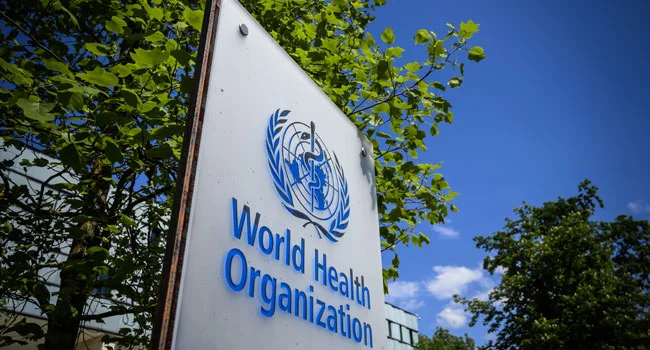The World Health Organization (WHO) has unveiled a major new campaign urging countries to significantly raise the prices of tobacco, alcohol, and sugary drinks through health-focused taxation. The initiative, known as “3 by 35,” calls for a minimum 50% real price increase on these harmful products by the year 2035, aiming to curb their consumption, reduce noncommunicable diseases (NCDs), and generate new revenue for struggling health systems.
A Bold Strategy to Fight Deadly Diseases
WHO’s latest push comes at a critical time. Across the world, health systems are buckling under the pressure of rising rates of chronic illnesses, growing public debt, and shrinking development aid. The organization argues that increasing taxes on unhealthy products offers a practical, efficient, and impactful solution to all three challenges.
NCDs, such as cancer, cardiovascular disease, chronic respiratory illness, and diabetes, are now responsible for more than 75% of all global deaths. A significant portion of these conditions is directly linked to the consumption of tobacco, excessive alcohol, and sugar-laden beverages.
With consumption rates remaining high in many countries, WHO believes that health taxes can be a game-changer—not only to reduce these behaviors but also to fund better health services and public infrastructure.
Preventing Millions of Premature Deaths
A recent analysis backed by WHO paints a powerful picture of what targeted taxation could achieve. According to the report, a single 50% increase in the real price of tobacco, alcohol, and sugary drinks could prevent as many as 50 million premature deaths over the next five decades. These are preventable deaths from illnesses driven by poor diets, addiction, and harmful lifestyle choices—factors that taxation has been shown to influence.
WHO’s Assistant Director-General for Health Promotion and Disease Prevention and Control, Dr. Jeremy Farrar, emphasized the urgent need for this reform. “Health taxes are one of the most efficient tools we have. They cut the consumption of harmful products and create revenue that governments can reinvest in health care, education, and social protection. It’s time to act,” he said.
Targeting $1 Trillion in New Revenue Over the Next Decade
The “3 by 35” campaign sets a bold target: to help countries collectively generate $1 trillion in additional revenue by 2035. This goal may seem ambitious, but WHO believes it is entirely achievable based on recent global trends.
From 2012 to 2022, nearly 140 countries introduced or increased tobacco taxes. In many of these countries, the real price of cigarettes rose by more than 50%, leading to measurable reductions in smoking rates. This shows that with political will and coordinated policy reform, meaningful change is possible—and quickly.
Beyond curbing harmful behavior, these taxes have an economic upside. Health taxes provide reliable streams of revenue that can be redirected into building stronger public services, particularly in low- and middle-income countries.
Success Stories: How Countries Are Leading by Example
Some countries have already seen strong success with similar measures. Colombia and South Africa, for instance, implemented targeted health taxes and witnessed a drop in the consumption of sugary drinks and tobacco products. These policies also delivered a significant boost to public finances, allowing governments to reinvest in healthcare and infrastructure.
In South Africa, for example, a sugar tax introduced in 2018 led to a 29% reduction in sugary beverage consumption in urban areas. Similarly, in Colombia, tobacco tax hikes helped reduce smoking rates while strengthening the country’s budget for health promotion.
These examples demonstrate that taxing harmful products can work—not just for public health but also for national development.
Breaking Free from Harmful Industry Influence
However, WHO warns that many countries still offer generous tax breaks to industries that produce harmful products. In some cases, international investment treaties and long-term contracts have restricted governments’ ability to increase taxes on tobacco and alcohol, even when such increases are in the public interest.
WHO is calling on countries to eliminate these loopholes and ensure that all harmful products are taxed at levels that reflect their true social and economic cost. In particular, the agency urges governments to reevaluate any policies or trade agreements that hinder their ability to implement health taxes.
The continued influence of tobacco and sugary drink manufacturers has, in many regions, undermined public health objectives. WHO insists that now is the time to take a firm stance, placing population health above corporate profits.
Supporting Sustainable and Self-Reliant Health Systems
One of the long-term goals of the “3 by 35” initiative is to support countries as they move toward sustainable, domestically funded healthcare systems. With donor support declining in many regions, countries need new sources of income to fund basic services. Health taxes, according to WHO, offer one of the most effective and politically viable ways to close this gap.
Many governments have already approached the WHO for technical assistance in designing and implementing effective fiscal policies. In response, the organization is providing toolkits, policy guidance, and technical support to help countries tailor health taxes to their local contexts.
By investing in healthier populations, governments can also improve workforce productivity, reduce the economic burden of disease, and accelerate broader development goals.
The Road to 2035: A Call to Action
WHO is urging all national governments, civil society organizations, and development partners to support the “3 by 35” campaign. The initiative is not only about taxes—it is a comprehensive approach to improving health equity, advancing universal health coverage, and accelerating progress toward the Sustainable Development Goals (SDGs).
In the coming years, WHO plans to work closely with policymakers, researchers, and health advocates to ensure that health taxes are designed fairly, implemented effectively, and used responsibly. This includes ensuring that revenue from these taxes is transparently managed and reinvested in programs that benefit public health.
At the same time, WHO stresses the importance of public awareness. Taxation on harmful products must be paired with education campaigns that explain the health risks and inform people of the long-term benefits of reduced consumption.
A Healthier Future Within Reach
As the world continues to grapple with rising rates of chronic disease, growing healthcare costs, and declining international aid, innovative financing tools are more important than ever. WHO’s “3 by 35” initiative offers a roadmap for countries to improve public health while strengthening their economic resilience.
With strong political leadership, international cooperation, and a shared commitment to health equity, the global community has a real opportunity to create lasting change—saving millions of lives while building stronger, more self-reliant nations.













